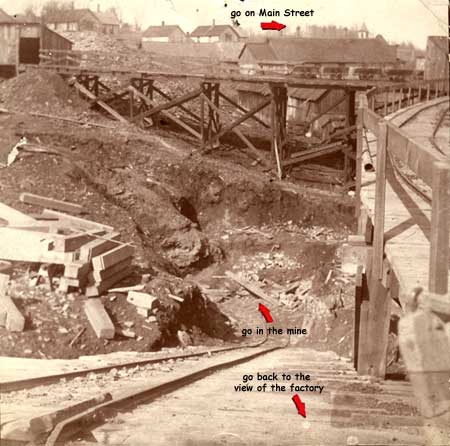northern view
to see the view 1897

photo credit: Clermont Reunion 2000

Soldier's
underground mine, located adjacent to the Clermont Tile, supplied some
of the best tile making clay in the northeastern United States. Seams of
clay ran beneath Clermont and these originally furnished most the raw material.
Hand drilling, blasting and donkey pulled trams were used to access the
clay. Grinding and drying was on the surface and in the plant. Eventually
Soldier's Mine closed. Clay was then trucked in from local strip mines.
Typically a coal seam overlaid the clay so one mine could be the source
of both raw materials.
Before the construction of the tile plant, the Clermont
area had been a source of soft coal both from the surface and underground
mines (coal was first discovered at nearby Instanter in 1815). This made
a convenient supply of fuel for the tile plant's boilers. Later, hard coal
replaced soft coal. The McKean County miner newspaper, dated 1899, mentioned
a 100 coal car train travelling to Clermont via Redmill Brook.